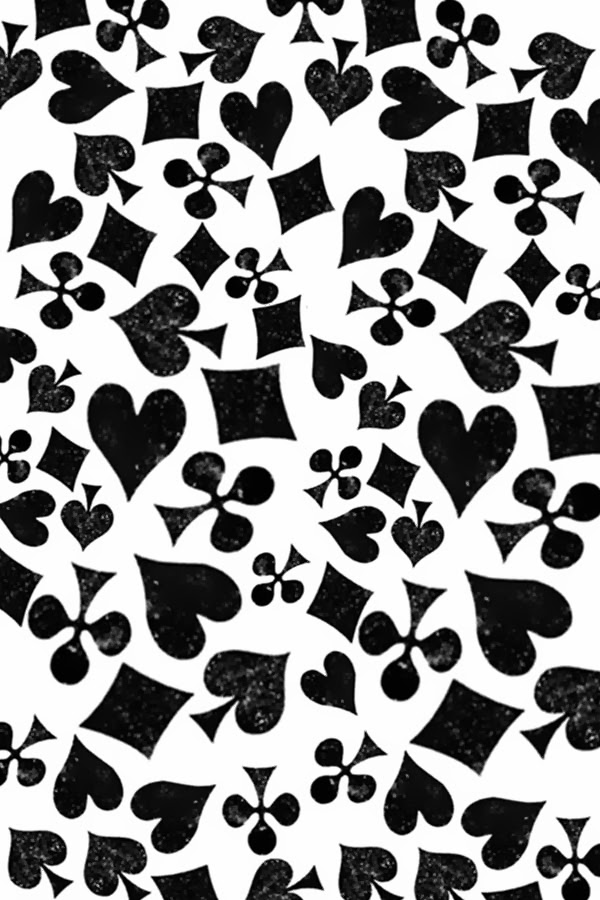Thursday, February 27, 2014
Make your Own Digital Stencil - It's a Big Deal!
Last week, Kay showed off her amazing talents with some really cool techniques using the Big Deal stencil - if you missed them, click HERE and HERE to see both posts.
I was especially WOWed by this one:
We don't get a stencil in the digital kit, but that didn't stop me from creating my own and riffing on that amazing card! Let me show you how I did it using the Big Deal Digital Kit.
(To make this a bit easier, we'll break this down into a couple of different parts.)
Part 1: CREATE THE STENCIL
1. Create a new document in your program of choice (I'm using Photoshop CC). I made mine about 8 inches square and gave it a white background so that it would be easier to see what I'm doing.
2. Open 0214BigDealCSD_StampImages1.png.
3. Use the lasso tool to select the 'suits' background stamp and drag it onto your new document.
4. Duplicate the layer and drag the new layer over to the left, fitting it close to the first layer without overlapping any of the image.
5. Duplicate the layer again, dragging it to the right - we'll use this to fill in some gaps.
6. Use the lasso tool to select one of the suit graphics and drag it into one of the gaps. Continue until you're satisfied with the look.
Tip: You can also move parts of the graphic on the left to make everything fit together better. Feel free to rotate images as needed, too. Play until you think it looks good.
7. Use the marquee tool to select the unused images on the right. Press 'Delete' to remove them.
8. Merge all the layers except the white background.
9. Select the white background layer in the Layers Palette and delete it.
10. Save your stencil as a PNG (or PSD) file so you can use it as often as you'd like.
Part 2: CREATE THE CARD
1. Create a new document that measures 4.5" wide by 6.5" tall.
2. Open your stencil file and drag the stencil onto your new document.
3. Click-and-drag on a corner handle to make the stencil larger, so that it continues beyond the edge of the document in all directions.
Tip: Hold down the Shift key while you click-and-drag to maintain the proportion of the stencil.
4. Command-Click (Mac) or Ctrl-Click (Windows) on the thumbnail of the stencil layer in the Layer Palette. You'll see 'marching ants' around the graphic.
5. Select Edit -> Fill and choose white. This will turn the stencil white. Deselect the layer.
6. Create a new Layer UNDER the stencil layer and use the paint bucket tool to fill the layer with black.
7. Select the stencil layer and Command-Click (Mac) or Ctrl-Click (Windows) on the thumbnail of the stencil layer in the Layer Palette. You'll see 'marching ants' around the graphic.
8. Create a new layer ABOVE the stencil layer.
9. Select the brush tool and choose a medium-sized brush with fuzzy edges.
10. Select a color from the color Palette and 'paint' a portion of the stencil.
11. Repeat step 10, choose a variety of colors, until you're satisfied with the look.
12. Use the Marquee tool and select the card back graphic from 0214BigDealCSD_StampImages1.png and drag it onto the card top. Click-and-drag on a corner handle to make the stencil larger, so that it continues beyond the edge of the document in all directions. This will add a bit of 'visual texture' to the card.
13. Add a graphic and sentiment to complete the card panel.
14. Command-A (Mac) or Ctrl-A (Windows) to 'select all'; you'll see 'marching ants' around the perimeter of the window. Select Image -> Crop.
14. Select Image -> Canvas Size. Change the size to 5 x 7.
15. Add a layer or two of different colors and/or backgrounds, trimming as needed. Add small drop shadows to create a bit of depth.
That's it!
I hope you'll give this a try. It's really not difficult and you can produce some amazing results!
Until next time, thanks for stopping by!
-Ron
Subscribe to:
Post Comments (Atom)















Ron I am just really loving this series of showing us how to recreate cards that have inspired you and turning them into amazing digital works of art!
ReplyDeleteGreat tut Ron - definitely going to play around with it. Thank you very much.
ReplyDeleteOh, how cool. Thanks for sharing this fantastic digi tutorial.
ReplyDeleteTruely amazing!
ReplyDeleteI love seeing paper creations translated into digital ones - thanks Ron, as always, for showing us how it's done!
ReplyDeleteLOve this card!
ReplyDelete